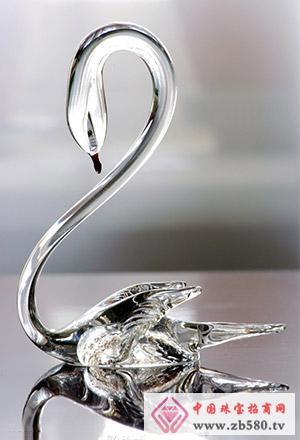Some natural crystals have some cracks. Is this because of the quality of the crystal, or is it natural crystal? Is there a crack in the large crystal that will break after being worn for a long time? Let me answer this question. First of all, natural crystals generally contain impurities (inclusions), or cracks, etc. Of course, there are also very clean crystals inside, but there are definitely not many. If there is no cracked crystal, we can think that it is very good, high quality, if the particles are large, the interior is very clean, there are no impurities and cracks, it is really impossible to meet! If the crystals of large particles have cracks, if they are not affected by external forces, there will be no major problems unless they are shocked, impacted, strongly temperature-changed, etc., which may crack. Let me add an explanation for the ice crack. The ice crack is for the transparent crystal, that is, the internal vision is cracked; it is supposed that the crystal is growing up, encountering earthquakes, etc., is the growth of various parts of the crystal ( The buttons on the clothes are wrongly buckled, and the clothes are creased. It is due to some "marks" left by the growth disorder (like the scars left after our skin is injured), not cracks. For example, powder crystal, amethyst, white crystal ball, column, etc. are very common. Classification and identification of natural crystals 1. The grade of natural crystal is not as obvious as the Mohs hardness. At present, there is no uniform and strict distinction in the world. Only some of the early active market developers have agreed and are common to the current market. The following are natural. White crystals are graded without the aid of a magnifying glass. 1.AA grade [commonly known as 3A grade]: The whole grade, that is, the entire crystal is transparent inside and outside, and the surface is not scratched by artificial honing. 2.A-grade [commonly known as 2A grade]: lower than AA, with subtle flaws, such as natural inclusions, no more than two to three centimeters of cloud or cotton wool, or can not be scraped with nails I feel that I must pay attention to the human wounds I will find. 3. Grade A: A level lower than A-, with slight flaws, such as cloud-like, cotton wool or surface impact of human impact, it is easy to see with the naked eye. 4. AB grade: lower than grade A, with obvious inclusions, large strips of cloud-like, cotton wool, small ice cracks inside, or obvious human impact scars, but no obvious large ice cracks . 5. Grade B: One level lower than the AB grade. Nearly half of the whole natural crystal is foggy, and the cotton wool has obvious large ice cracks and can be felt with ice nails. 6. Grade C: The lowest level, most of the whole is cotton-like translucent or opaque or has very large ice cracks, it feels like it will break open at any time. 2. Nowadays, the production of natural crystals is difficult, and the production of AA grades is rare. Otherwise, it is a high price. It is already enviable to have A-grade or A-grade goods. Do you know how many rings should you buy? 1. In fact, the ring is numbered, and the number corresponds to the corresponding perimeter and diameter. 2. For measuring the size of the ring, please use the auxiliary (such as the thread) to wrap the length of the part where you want to wear the ring. This size is the inner circumference of the ring that is suitable for you. You can find the corresponding ring number or size below. . Suede Fabric,Suede Material,Suede Cloth,Black Suede Fabric Shaoxing Yiyang Textiles Co.,Ltd , https://www.yiyangfabrics.com